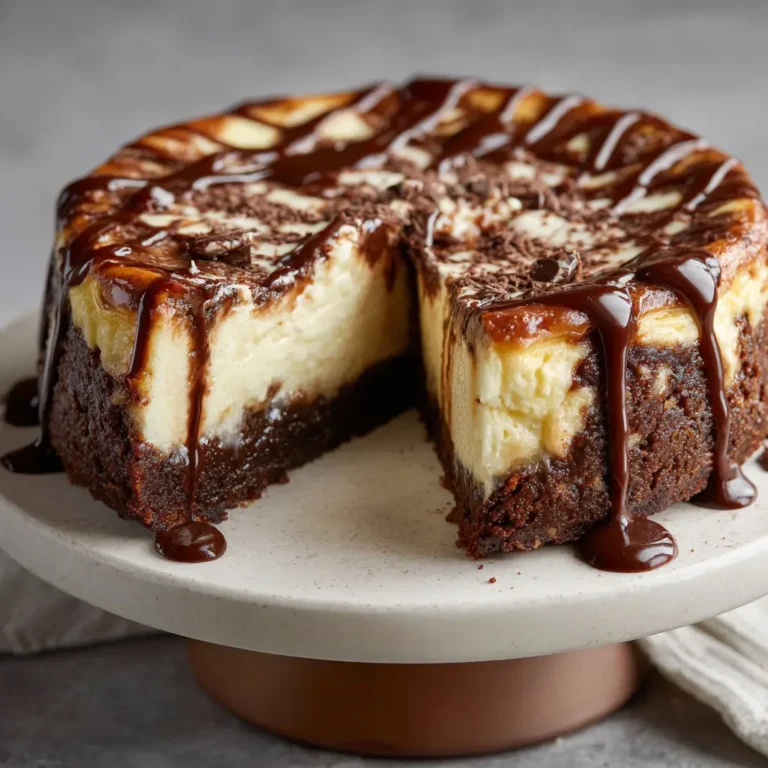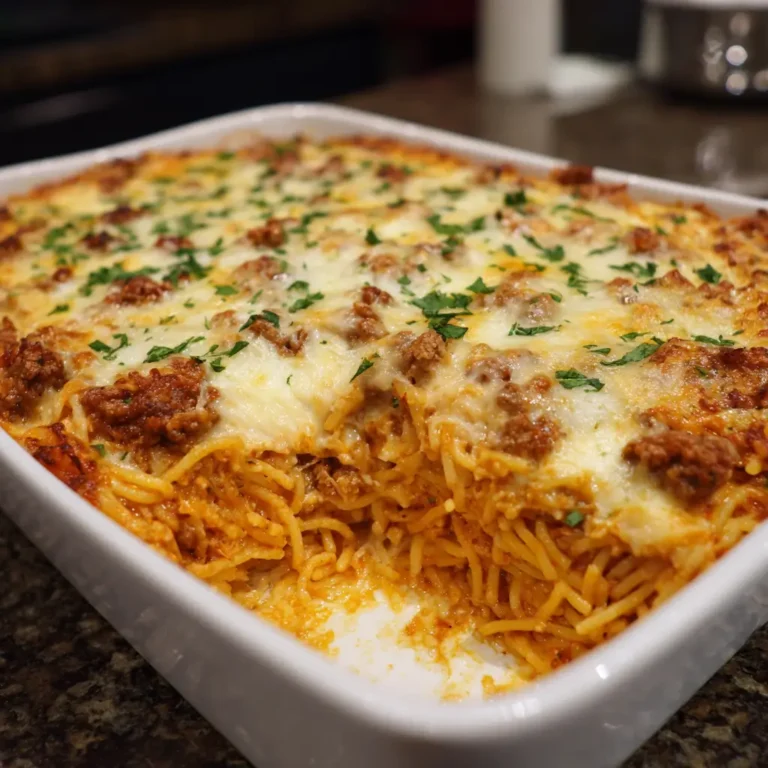Crepe Suzette
Introduction
Crepe Suzette is one of the most iconic and elegant desserts in French cuisine, renowned for its delicate texture, citrus-infused flavor, and dramatic flambé presentation. Often served tableside in fine dining restaurants, this dessert combines thin, golden crepes with a luscious orange-scented buttery sauce that’s set ablaze with a splash of liqueur, creating an unforgettable sensory experience. More than just a dessert, Crepe Suzette is a performance—a culinary spectacle that dazzles guests with its flames, fragrance, and rich, velvety taste.
The History
The origins of Crepe Suzette are shrouded in legend, but the most popular tale dates back to the late 19th century and involves none other than the future King Edward VII of England. According to the story, during a dinner at Café de Paris in Monte Carlo, a young assistant waiter named Henri Charpentier was preparing traditional lemon-flavored crepes for the Prince of Wales (later Edward VII). In a moment of youthful exuberity—or perhaps accidental brilliance—he added orange juice, zest, sugar, and Grand Marnier to the pan, which ignited upon contact with the heat. The resulting dish was so divine that the prince requested it be named after his companion, a young woman named Suzette.
Another version credits Auguste Escoffier, the legendary French chef, with creating the dessert, though he never officially claimed it. Regardless of its true origin, Crepe Suzette quickly gained popularity across Europe and America in the early 20th century, becoming a symbol of French gastronomy and sophistication. Its association with luxury dining and theatrical presentation cemented its place in haute cuisine, making it a favorite among royalty, celebrities, and food connoisseurs alike.
Ingredients Breakdown
The magic of Crepe Suzette lies in the harmony of simple yet high-quality ingredients. Each component plays a crucial role in building the dessert’s complex flavor profile:
- Crepes: Made from flour, eggs, milk, butter, and a pinch of salt, the crepes form a tender, slightly chewy base that absorbs the citrusy sauce without disintegrating.
- Oranges and Lemons: Freshly squeezed juice and finely grated zest provide bright acidity and aromatic oils essential to the signature citrus flavor.
- Sugar: Granulated sugar caramelizes in the pan, forming the foundation of the sauce, while powdered sugar may be used for dusting.
- Butter: Unsalted butter adds richness and smoothness to the sauce, helping emulsify the citrus juices and alcohol.
- Liqueurs: Grand Marnier, Cointreau, or triple sec contribute depth and sweetness with their orange essence. Brandy or cognac is often added for warmth and complexity, especially during flambé.
- Optional Garnishes: Whipped cream, vanilla ice cream, chopped nuts, or fresh berries can accompany the crepes for added texture and contrast.
Using fresh, high-quality ingredients—especially freshly squeezed citrus juice and real butter—is essential for achieving the authentic taste and luxurious mouthfeel of Crepe Suzette.
Step-by-Step Recipe
- Prepare the Crepe Batter: In a large mixing bowl, whisk together 1 cup all-purpose flour and a pinch of salt. Create a well in the center and add 2 large eggs. Gradually incorporate 1 ¼ cups whole milk, stirring gently to avoid lumps. Mix in 2 tablespoons melted unsalted butter and ½ teaspoon vanilla extract until smooth. Let the batter rest for 30 minutes at room temperature to allow the gluten to relax and the crepes to become more pliable.
- Cook the Crepes: Heat a non-stick skillet or crepe pan over medium heat and lightly grease with butter. Pour about ¼ cup of batter into the pan, swirling immediately to spread it into a thin, even layer. Cook for 1–2 minutes until the edges begin to lift and the bottom is golden. Flip and cook for another 30 seconds. Transfer to a plate and repeat with the remaining batter, stacking the crepes with parchment paper between them to prevent sticking.
- Make the Orange Sauce: In a large skillet, melt 4 tablespoons unsalted butter over medium heat. Add ½ cup granulated sugar and stir until dissolved and beginning to caramelize (about 3–4 minutes). Stir in the zest of 2 oranges and 1 lemon, followed by ½ cup freshly squeezed orange juice and 2 tablespoons lemon juice. Simmer for 5 minutes until the sauce reduces slightly and thickens.
- Add Liqueur and Flambé: Remove the pan from heat and carefully add ¼ cup Grand Marnier and 2 tablespoons cognac. Tip the pan slightly and use a long match or lighter to ignite the alcohol. Allow the flames to subside naturally (about 1–2 minutes), then return the pan to low heat.
- Warm the Crepes: Fold each crepe into quarters and gently place them in the warm sauce, turning to coat evenly. Simmer for 2–3 minutes to infuse the crepes with flavor.
- Serve Immediately: Arrange the crepes on warmed plates, spoon extra sauce over the top, and garnish with additional zest, powdered sugar, or a scoop of vanilla ice cream. Serve while still warm for the best texture and aroma.
Tips
- Rest the Batter: Never skip resting the crepe batter. This step ensures tender, flexible crepes that won’t tear when folding or rolling.
- Use a Non-Stick Pan: A good quality non-stick or crepe-specific pan makes cooking and flipping much easier, especially for beginners.
- Control the Heat: Medium heat is ideal. Too hot, and the crepes burn; too low, and they become rubbery.
- Fresh Citrus is Key: Bottled juices lack the vibrant aroma and brightness needed for authentic flavor. Always use freshly squeezed orange and lemon juice.
- Safety First When Flambéing: Ensure long hair is tied back, sleeves are rolled up, and flammable objects are away from the stove. Keep a lid nearby to smother flames if necessary.
- Practice Makes Perfect: The first few crepes may not be perfect—don’t worry! Save imperfect ones for tasting or reheating later.
- Keep Crepes Warm: Place cooked crepes on a plate covered with a clean kitchen towel or in a low oven (200°F) while preparing the sauce.
Variations and Customizations
While classic Crepe Suzette remains timeless, chefs and home cooks have developed numerous creative variations to suit different tastes and occasions:
- Dairy-Free Version: Substitute butter with coconut oil or vegan margarine and use almond or oat milk in the crepe batter.
- Gluten-Free Crepes: Use a blend of rice flour, tapioca starch, and xanthan gum to replace all-purpose flour.
- Non-Alcoholic Crepe Suzette: Omit the liqueur and brandy, enhancing the sauce with extra orange zest, vanilla, or a splash of orange blossom water for complexity.
- Fruit-Infused Twists: Add sliced strawberries, bananas, or raspberries to the sauce for a fruity twist.
- Chocolate Crepe Suzette: Incorporate cocoa powder into the batter and drizzle with chocolate-orange sauce for a decadent fusion.
- Savory-Sweet Fusion: Add a pinch of sea salt and serve with a dollop of crème fraîche for a balanced flavor profile.
- Individual Presentation: Roll crepes and place them upright in ramekins, then pour warm sauce over for an elegant plated dessert.
- Make-Ahead Option: Prepare crepes and sauce separately in advance; reheat and combine just before serving.
Health Considerations and Nutritional Value
While undeniably delicious, Crepe Suzette is a rich dessert best enjoyed in moderation. Here’s a breakdown of its nutritional aspects:
- Calories: One serving (2 crepes with sauce) contains approximately 450–600 calories, depending on portion size and added ice cream or whipped cream.
- Fat Content: High in fat due to butter and egg yolks, primarily from healthy unsaturated fats if real butter is used in moderation.
- Sugar: The sauce contains significant sugar from both granulated sugar and liqueur. Diabetics or those monitoring sugar intake should consume sparingly or consider sugar substitutes like erythritol or monk fruit.
- Alcohol: Though most alcohol burns off during flambé, trace amounts may remain. Not recommended for children, pregnant women, or those avoiding alcohol.
- Nutrient Benefits: Eggs and milk provide protein and calcium; citrus offers vitamin C and antioxidants from flavonoids in the peel.
- Balancing the Dish: Serve with a side salad or fresh fruit to balance the meal. Opt for smaller portions to savor the experience without overindulgence.
Ingredients
For the Crepes:
- 1 cup all-purpose flour (or gluten-free alternative)
- 2 large eggs
- 1 ¼ cups whole milk (or plant-based milk)
- 2 tablespoons unsalted butter, melted
- ½ teaspoon vanilla extract
- Pinch of salt
For the Orange Sauce:
- 4 tablespoons unsalted butter
- ½ cup granulated sugar
- Zest of 2 oranges
- Zest of 1 lemon
- ½ cup freshly squeezed orange juice (about 2–3 oranges)
- 2 tablespoons freshly squeezed lemon juice
- ¼ cup Grand Marnier, Cointreau, or triple sec
- 2 tablespoons cognac or brandy
For Serving (Optional):
- Vanilla ice cream or whipped cream
- Powdered sugar for dusting
- Fresh mint leaves or orange slices
Directions
- In a large bowl, sift together the flour and salt. Make a well in the center and crack in the eggs. Whisk the eggs gently, gradually incorporating flour from the sides.
- Slowly pour in the milk while whisking continuously to prevent lumps. Add melted butter, vanilla extract, and whisk until smooth and silky.
- Cover the bowl and refrigerate for 30 minutes (or up to 1 hour) to allow the batter to rest.
- Heat a crepe pan or non-stick skillet over medium heat. Lightly grease with butter using a paper towel.
- Pour about ¼ cup of batter into the pan, lifting and tilting the pan to spread the batter evenly into a thin circle.
- Cook for 1–2 minutes until the edges begin to brown and lift. Use a spatula or your fingers to flip the crepe and cook the other side for 30–60 seconds.
- Transfer to a plate and repeat, stacking crepes with parchment paper between layers.
- To prepare the sauce, melt butter in a large skillet over medium heat. Add sugar and stir until dissolved and golden (do not let it burn).
- Stir in orange and lemon zests, then pour in orange and lemon juices. Simmer for 5 minutes until slightly thickened.
- Remove from heat and carefully add Grand Marnier and cognac. Ignite with a long lighter or match, allowing flames to burn out naturally.
- Return the pan to low heat and gently fold in the crepes, coating them thoroughly with the sauce. Warm for 2–3 minutes.
- Serve immediately on warm plates, drizzled with extra sauce, and garnished as desired.
FAQ
Can I make Crepe Suzette without alcohol?
Yes, you can omit the liqueur and cognac. Enhance the flavor with extra orange zest, a splash of vanilla, or orange flower water. While you won’t get the flambé effect, the dessert will still be delicious.
Why did my crepes turn out rubbery?
This usually happens if the batter wasn’t rested, the pan was too cold, or the crepes were overcooked. Resting the batter hydrates the flour and relaxes the gluten, yielding softer crepes.
Can I freeze Crepe Suzette?
Yes, both plain crepes and the sauce can be frozen separately. Thaw in the refrigerator and reheat gently in a pan with a little butter or sauce.
What’s the difference between Crepe Suzette and regular crepes?
Regular crepes are neutral and can be filled with sweet or savory ingredients. Crepe Suzette refers specifically to crepes served in a citrus-butter-liqueur sauce, often flambéed.
Is flambéing dangerous?
It can be if proper precautions aren’t taken. Always remove the pan from heat before adding alcohol, keep flammable materials away, and use a long lighter. Never lean over the pan.
Can I prepare this ahead of time?
Yes, make the crepes and sauce base (without alcohol) in advance. Reheat and add liqueur just before serving to perform the flambé for maximum effect.
Summary
Crepe Suzette is a luxurious French dessert featuring delicate crepes bathed in a fragrant orange-caramel sauce flambéed with Grand Marnier and cognac. Elegant, aromatic, and unforgettable, it transforms a simple pancake into a show-stopping finale to any fine meal.






